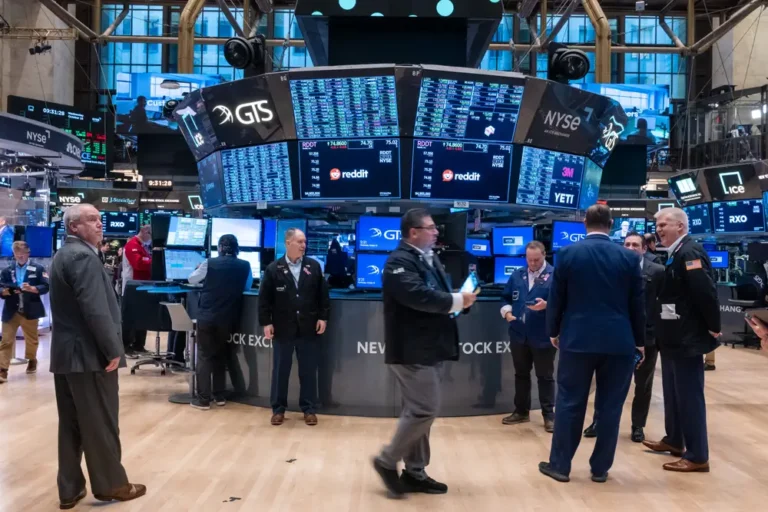Brands want ‘fewer, bigger, better’ creator relationships as the appeal of micro influencers dips, according to a new marketer survey. Here were 4 other key takeaways.

- Influencer-marketing agency Linqia released a new report about trends in the industry.

- Influencer-marketing agency Linqia released a new report about trends in the industry.
- Brands prefer partnering with macro influencers (100,00 to 500,000 followers), the report shows.
- Here are four other key takeaways from it.
According to a new report from the influencer-marketing agency Linqia, more than three-quarters of brands plan to collaborate with macro influencers (those with 100,000 to 500,000 followers, such as TikTok creator Cherie Luo) in 2023.
When Linqia published this report in 2021, “micro” influencers (those with fewer than 100,000 followers) were the most sought-after brand partners. However, what brands hope to gain from collaborations with creators may be changing, according to Keith Bendes, VP of strategy at Linqia.
“Brands want fewer, bigger, and better — they’re really investing in deeper relationships with influencers,” he explained to Insider. “It’s much more difficult to go deeper with a lot of volume.” They want deeper relationships with influencers.”
Linqia polled over 250 enterprise brand and agency marketers for the report in July.
Here are five key takeaways.
1. Influencer-marketing budgets continue to increase despite economic headwinds.
Approximately 76% of respondents said their influencer marketing budgets had increased or remained the same compared to the previous year.
Even more specifically, 18% of respondents reported seven-figure budgets for influencer marketing in 2023. According to the survey, 15% of marketers had budgets of $100,000 or less.
“It’s a much larger spend, and it’s a much bigger part of an integrated strategy,” Bendes explained.
2. Brands want to work with macro influencers, who have surpassed micro creators in popularity.
According to Linqia, 90% of marketers intend to use micro influencers in their campaigns in 2021. This year, the percentage has shifted to 74% of marketers.
Meanwhile, 72% of brands expect to hire macro influencers for their campaigns this year, up from 72% in 2021 to 81% in 2023.
According to Bendes, micro-influencer rates have risen in the last two years, and in some cases, they charge nearly the same as macro influencers.
However, micro influencers have not completely lost their appeal, and there is still a high demand from brands for their work, he added.
According to Linqia data, the percentage of marketers hiring celebrities for influencer marketing deals more than doubled between 2021 and 2023, rising from 14% to 29.5%.
3. Most brands expect AI to assist them in identifying the best creators to collaborate with.
When asked about AI’s potential impact on the influencer-marketing industry, approximately 72% of brands stated that they would like to see it assist them in identifying the right influencers for campaigns.
“I think it’s telling that, despite all of the innovation and everything we do in this industry, finding the right creator partners is still one of the biggest pain points brands have,” said Bendes.
Approximately 65% of marketers would also like to see AI streamline performance analytics for influence marketing.
4: More than half of brands use user-generated content on their own social channels.
Creator-generated content (also known as user-generated content, or “UGC”) is appealing to brands because it involves a creator creating content for a brand that will only appear on the brand’s own channels. Fifty-eight percent of survey respondents said they collaborated with creators in this way.
“This is where the whole influencer versus creator debate takes place,” Bendes explained. “For many brands, the question is, are you truly attempting to influence consumers?” Are you attempting to create really cool content? And if you’re just trying to create really cool content and it’s about your channels and marketing rather than influence, then the person’s reach doesn’t matter.”
5 Engagement rate is still the most common way to measure campaign success.
Linqia asked marketers to select their “top three measures of success” for influencer-marketing campaigns, and the results revealed that engagement rates continue to be the most important. Brands can use engagement rates to determine how much of an influencer’s audience interacts with their content.
According to the survey, engagement rates are the most important KPI for 69% of marketers.
With 53% of respondents naming it as a top measure of success, reach (which calculates how many accounts an influencer’s content will reach) was the second most important metric.
Here’s a breakdown of the most important influencer-marketing metrics for brands:
- 68.85% of people are engaged.
- CPM Reach: 53.28%
- 43.44% brand lift or share of voice
- 34.43% conversion rate (sign-ups)
- 32.79% traffic (CTR)
- Sales: 30.33%
- Influencer quality: 21.31%
- 14.75% increase in followers
- 11.48% of products added to cart
- Other: 3.28%






